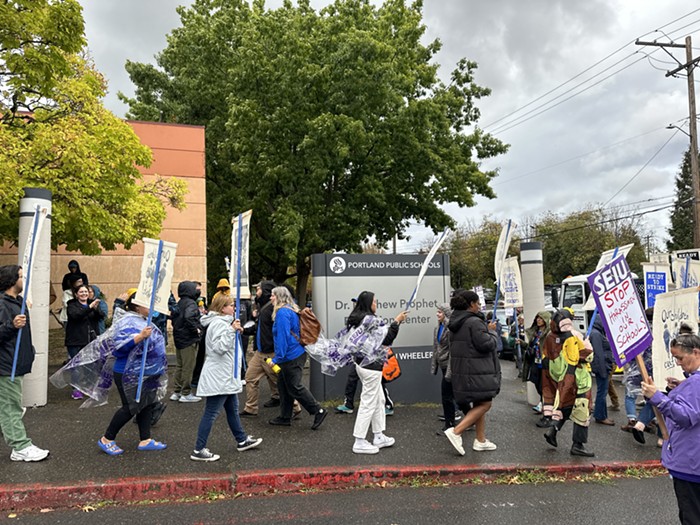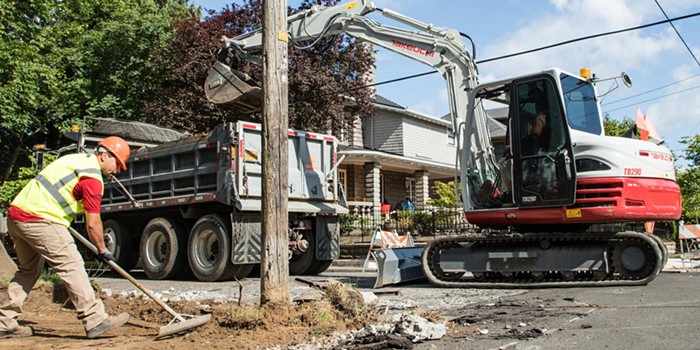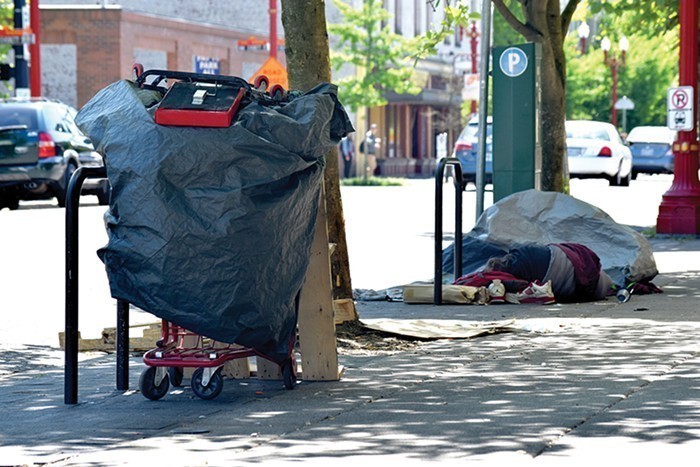
- Melissa Rachel Black
In this week's paper, we explored the likelihood Oregon will legalize marijuana later this year—or at least take steps to ensure it happens next year.
That looks good, largely because of an initiative that's attracted more than a quarter-million from the country's pot advocates and the attention of state legislators in Salem. Next month, lawmakers will decide whether to put a referendum before voters in November asking whether we should legalize the drug once and for all.
Left out of the article was another set of pot initiatives that haven't gotten much press, but will be familiar to anyone who's followed this issue: Paul Stanford's pushing his own proposals again.
Stanford is the activist who got Measure 80 on the ballot in 2012. The proposal would have legalized pot—with no prohibitions on how much people could cultivate for their own use—and establish a seven-member commission to regulate sales, taxes and distribution in the state.
But while efforts in Colorado and Washington attracted weed advocates in droves—and passed—Stanford's measure raised less than $70,000. It was critiqued for being too lenient, and for the fact members of the marijuana industry would hold a majority stake on that seven-member board. Still, 47 percent of voters approved—something advocates and legislators take as a sign Oregon's ripe for legalization.
This time around, Stanford's filed two marijuana initiatives (along with three more dealing with other topics). The first is a brief constitutional amendment [pdf]. The second is a statutory change [pdf] Stanford's nicknamed "the son of measure 80." It's much the same as the 2012 measure, but places limits on how much individuals can grow and harvest (1.5 pound and 24 plants) and lets the governor appoint the whole regulatory commission. The more-detailed New Approach Oregon proposal [pdf] would put the OLCC in charge of licensing and regulation, and allow 8 ounces and four plants.
Stanford says he was involved in drafting the New Approach initiative early on, but that he got "cut out of the loop" at some point in September. He also says he initially favored a model that placed regulatory authority with the OLCC, but that polling suggested that would be unpopular.
"A lot of people have had direct experience dealing with the OLCC in a negative way," he said.
Stanford's initiatives were filed earlier than New Approach's but haven't garnered the same financial interest. Much of the fundraising has come from a Texas organization called the Foundation for Constitutional Protection—which has kicked in $77,000 toward the "son of Measure 80"— and from Stanford's own group, Campaign for the Restoration and Regulation of Hemp. But he notes he's also collected tens of thousands in contributions from Oregonians, and the Oregon branch of the National Organization for the Reform of Marijuana Laws backs the effort.
What this means for November may be decided in Salem next month. If the legislature sends a referendum to voters—and pot activists are happy with it—it's likely both New Approach and Stanford would pull their initiatives to clear the path, though Stanford wants to float the constitutional amendment no matter what. If lawmakers waffle on legalization or create a referendum activists hate, it's possible we'll have up to four pot measures to vote on.
Still, Stanford concedes the New Approach initiative has more resources, and said he'd consider stepping back and letting that effort dominate the discussion.
But there's also this: Both of Stanford's proposals are in the signature-collecting phase. He's already submitted more than 20,000 signatures for his constitutional amendment, and more than 12,000 for the statutory petition. New Approach's initiative, filed in November, has yet to be cleared to gather signatures. And activists will now have to wait a while longer—the proposal's ballot language was challenged in court on Tuesday. The Mercury hasn't yet seen a copy of the challenge, but it will eventually be decided by the Supreme Court. And it will need to be decided relatively soon, if the group hopes to start gathering in time to collect 87,213 signatures by early July.


















